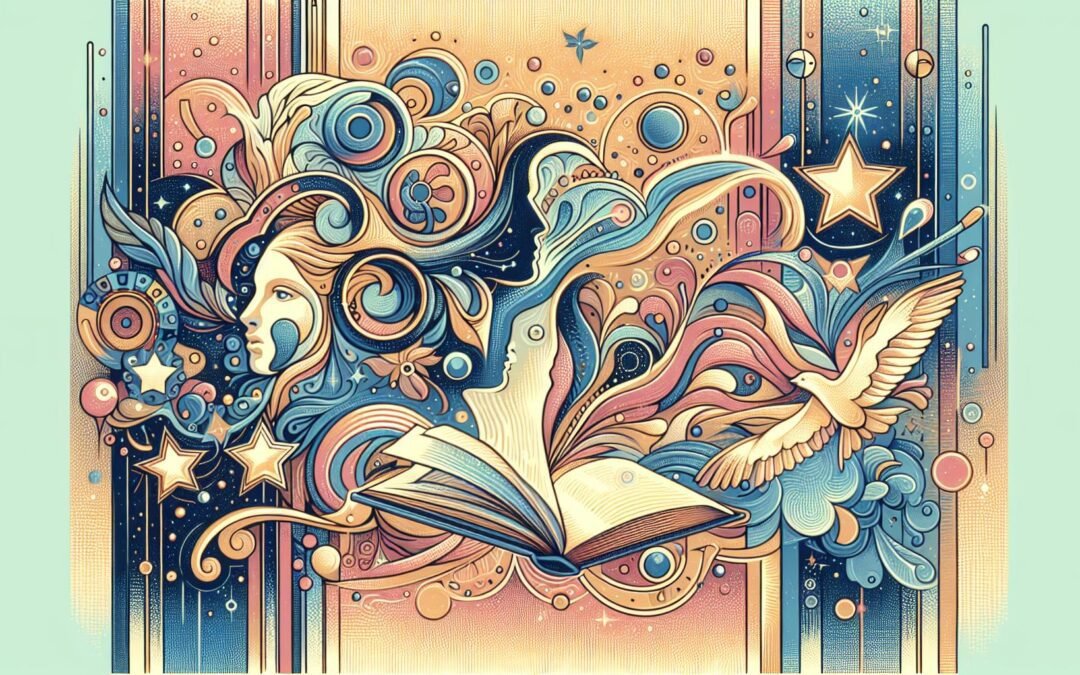Equality poetry traces its early emergence to moments of intense social upheaval, spotlighting literary activism as both artifact and instrument. In North America, Phillis Wheatley’s works stand among various abolitionist poets in pre-Civil War America whose verse pressed for legal, moral, and human recognition. Studies of Native American, Latinx, and Asian-American writers confirm that written and oral poetic traditions interrogated dominance and imagined shared futures, yet broader educational exclusion limited their recorded legacies. Transatlantic currents shaped the discourse, as poetic appeals for emancipation traveled through international abolitionist, suffrage, and labor networks. From the 1848 Seneca Falls Convention to British suffragist poetry, these movements featured skilled deployment of meter and metaphor to demand inclusion. Poetic works authored by activists circulated beyond their origins, influencing reforms on multiple continents. For a rich perspective on romantic and historic poetic traditions, romantic poems for wife provides context on how themes of love and justice intertwine across literary forms.
Historical Context of Equality Poetry
Equality poetry did not arise in a vacuum; its intellectual and artistic roots span revolutionary pamphlets, trade union broadsides, and anticolonial manifestos. Harriet Jacobs, Frances Ellen Watkins Harper, and Bartolomé de las Casas cultivated verse to amplify collective resistance and frame suffering through individualized stories. In the twentieth century, Harlem’s literary renaissance inspired audiences through intimate performances, yet claims about radio reach should be tempered by archival realities showing selective broadcast and access. Lines from Langston Hughes, Claude McKay, and Anne Spencer traveled by print and voice, embedding protest in popular consciousness while addressing material limitations of publication and distribution. Poets shaped responses to institutional oppression using hyperlocal idioms and inventive form, seen in South African anti-apartheid works by Ingrid Jonker, Mongane Serote, and Dennis Brutus, with their coded language and metaphorical defiance. Nigerian poets Wole Soyinka and Christopher Okigbo enlarged the scope, charting connections among colonial extraction, gendered violence, and linguistic loss.
Poetic Intersections with Social Movements
Verse became indispensable for suffragists, labor activists, and anti-racist organizers. Charlotte Perkins Gilman integrated poetry into treatises for gender transformation. As civil rights campaigns gathered momentum, works by Gwendolyn Brooks and Robert Hayden gave rhythmic shape to calls for voting rights and school integration. For canonical examples, explore best contemporary poets to observe how modern voices sustain and adapt this tradition. Antiwar poetry, particularly during Vietnam, encoded dissent and challenged state narratives. Beyond Atlantic boundaries, poets Rabindranath Tagore and Faiz Ahmed Faiz reimagined lyric voice for anti-imperial struggle. The rise of mimeograph, digital platforms and other new technologies enabled global dissemination while reshaping audience demographics and expectations. However, the reach of media has always been shaped by institutional decisions, language barriers, and material inequalities.
Global Resonance and Suppressed Lineages
Many foundational voices remain underrepresented. Early works by Zitkála-Šá and Nanao Sakaki foreground Indigenous sovereignty and cultural memory. Latinx pioneers such as Julia de Burgos crafted poems that condemned structural injustice and asserted new communal identities. Rigoberta Menchú’s oratory, translated as verse, cemented a tradition of poetic testimony among resistance movements in Central and South America. These contributions refute Eurocentric models suggesting singular origins for equality poetry. The interplay between oral storytelling, autobiography, and experimentation complicates simplistic genealogies. Readers interested in comparative approaches should see scholarship on poems to make her fall in love, where genre fusion fosters critical inquiry.
Defining Equality Poetry
Although scholars debate its parameters, equality poetry generally refers to contestatory poetics animated by the pursuit of dignity and inclusion for marginalized populations. Its guiding features draw attention to lived realities of exclusion—discrimination, erasure, and violence—alongside acts of resilience and visions of justice. The term equality poetry is relatively recent and not standardized in academic circles; it frequently appears as shorthand for works spanning protest, affirmation, and utopian experiment. When contrasting with protest poetry or explicitly political poetry, distinctions blur. Anger, grief, philosophical argument, and lyrical hope all circulate across genres. Genre purity proves elusive as poets adapt forms, modes, and diction to evolving exigencies. For more on these shifting genres, visit types of love poetry, which tracks poetic forms’ adaptability.
Thematic Axes, Forms, and Boundaries
Representative works frequently foreground autonomy, representation, and transformation. Marge Piercy and June Jordan merge autobiography with historical documentation, harnessing personal narrative as critique. For Cherríe Moraga, Leah Lakshmi Piepzna-Samarasinha, and Suheir Hammad, multilingual registers—English, Spanish, Arabic, Tagalog—disrupt presumed boundaries of nation and belonging. Meanwhile, poets of disability justice such as Jillian Weise and Raymond Luczak insert embodied difference directly into form, fragmenting linear narration and typographic expectation to make access both subject and method. Play and defiance meet in contemporary works synthesizing literary and performance modalities, as seen by reading goodnight poems for her which pair oral cadence with innovative structure.
Critical Frameworks and Points of Tension
Methodologies from critical race theory, feminist theory, and queer studies inform much contemporary analysis, though invocation without textual engagement amounts to little. Intersectionality, as articulated by Kimberlé Crenshaw, provides a crucial but sometimes overused lens for examining overlapping structures of disadvantage. In practice, the sharpest poetry outpaces theory, translating institutional critique into sensuous imagery. Notably, debates over authenticity, performance, and commodification remain vital. Poets sometimes face pressure to retail experience in palatable forms, an issue raised by contributors to online forums hosted by the Poetry Foundation and Poetry Society. Counterarguments emerge in public conversations around audience, power, and responsibility in poetic production. Work that foregrounds aesthetic autonomy, such as Claudia Rankine’s “Citizen” or Muriel Rukeyser’s World War II notebooks, resists marketable cliché through sustained engagement with contradiction and doubt.
Major Figures, Techniques, and Evolving Arenas in Equality Poetry
Maya Angelou’s “Still I Rise” exemplifies equality poetry’s signature blend of resilience and direct address, utilizing cadence derived from oral tradition to reframe hurt as pride. Audre Lorde’s “A Litany for Survival” works through vulnerability, generating space for collective presence. Gwendolyn Brooks’s “We Real Cool” deploys jazz-influenced minimalism to render ordinary lives visible and worthy. Claudia Rankine’s “Citizen” employs lyric essay structure and hybrid narrative, calling attention to racial microaggressions in daily life and the media. These examples exceed tokenist reference by sustaining multi-layered critique and formal risk. Deepening engagement with these figures, readers may seek guidance from poems about art which explore parallel transformations in visual and literary culture.
Lineage and Technique: From Form to Performance
Adaptation of inherited forms informs the genre’s vitality. Sonnet and ghazal, once reserved for elite circles, have been appropriated and transformed by poets like Agha Shahid Ali and Terrance Hayes. In doing so, writers assert new meanings within and against the confines of tradition. Free verse continues to dominate, affording room for code-switching, repetition, and multiple registers. Contemporary collectives, including Button Poetry and the Nuyorican Poets Cafe, embrace slam, spoken word, and digital platforms. Their work places emphasis on embodiment, rhythm, and communal call-and-response, themes central to the contemporary poetic stage. Explore rhyming poetry about love for case studies in form adaptation across genres.
Intersectionality, Innovation, and Reception
Beyond race and gender, new poetic voices challenge traditional categorization. Layli Long Soldier and Ellen van Neerven center Indigenous land, memory, and epistemology, intertwining personal and historical trauma with lyric economy. Poets living with disability or on the autism spectrum incorporate typographical play to foreground alternative modes of apprehension. As intersectional vocabularies encounter mainstream curation, questions of tokenism and institutional power gain salience. Recent anthologies that spotlight trans and immigrant communities further disrupt inherited canons, yet critical attention too often stops at enumeration rather than sustained analysis. For readers interested in representation and its evolution, poems about sisters love spotlights familial and communal bonds across cultures.
Global and Transnational Trajectories
Equality poetry’s trajectories stretch across continents. Nigerian, Indian, and South African poets address colonial and postcolonial legacies, sometimes intersecting with Black Lives Matter and other international mobilizations. Youth collectives from Cape Town, Delhi, and Toronto harness online platforms, merging local inflections with global solidarity. For continued exposure to poetic innovation, lesbian love poems demonstrate cross-cultural foundations and new approaches. Relation to musical forms (blues, hip-hop) has fundamentally changed expectations of performance, audience, and text. Intersections with jazz shaped the works of Langston Hughes and Sonia Sanchez; hip-hop reframed public discourse on social justice for generations. In the current digital landscape, poets employ GIFs, memes, and collaborative video to challenge definitions of authorship and authenticity. Literary institutions, streaming platforms, and informal networks all shape reception. Institutional recognition now interacts with grassroots networks and commercial pressures, raising ongoing debates about the balance between visibility, authenticity, and commodification. Wikipedia and Poetry Foundation offer background on these global developments.

